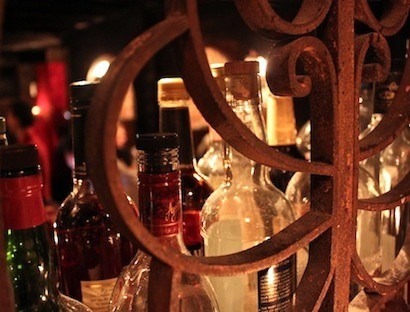What Is Mezcal?
What should be regarded for its handcrafted traditions and respect for heritage, nature, and the elements is instead often seen as the rough liquor with a worm or scorpion in the bottle. But authentic mezcal is made with a true chef's attention to flavor and detail, with awareness of the surroundings.
Think of mezcal like wine. The agave (also sometimes called "maguey") reflects a sense of place just as wine grapes have terroir. Variations in seasonal rainfall, heat waves, earthquakes, and even political unrest can affect a vintage in the same way they would wine, with good years and bad years. There are also different varietals of agave used for mezcal.
The producers employ local workers who are often younger generations of those with a family legacy of mezcal production. The palenqueros are proud of their work and their ancestors' and relatives' work, and this pride can become territorial. Only a small percentage of the mezcal produced is imported, and much of it is not available commercially. Clans have been known to fight over whose family recipe is better, who has claim over a certain growing field, and even knowledge that a family member is now working for a rival producer.
How does mezcal differ from tequila? Most mezcal production is concentrated in the southerly state of Oaxaca, with some in more northern Guerrero, Zacatecas, San Luis Potosi, Guanajuato, Tamaulipas, and Durango. And as mentioned, mezcal can be made from a variety of agaves, while tequila is only made from blue Weber, with the majority made in Jalisco and its highlands.
Besides the varietal and location differences, the major difference is in how the agave is cooked prior to fermentation. The word mezcal derives from the ancient Nahuatl metl ixicialli, meaning "oven-cooked agave." The piña (heart) is often fire-roasted in an earthen pit before fermentation, tequila is steamed.
In Mexico, mezcal is not meant to be mixed into cocktails or drunk as a shooter. It is a ceremonial drink shared between friends and family. In some homes, there are shrines dedicated to Mayahuel, the goddess protecting the agave and fertility of the soil it grows in. It is customary to pour a few drops on the earth as an appreciative offering to her.
In the U.S., mezcal has a different story. While more of us have come to appreciate its heritage and nuances, we can't help ourselves from enhancing its flavor with cocktails. Below are some brands to try and ways to enjoy them. Like tequila, mezcal is available in different age variations, but for the purposes of this article only jovens are mentioned.
Ilegal: The story behind this name derives from a time the brand owner, John Rexer, smuggled the liquor between borders. The demand eventually became such that he had to go into legitimate production to keep up. This small-batch Espadín, in the hand-numbered bottle, is a great entry into mezcal — clean, slightly floral with a mango tang, sweet smoke, and a hint of brine.
Sombra: If you've ever wondered what master sommeliers drink on their wine downtime, this gives you great insight. Sombra ("the shadow") was conceived by master sommelier and winemaker Richard Betts with importer Charles Bieler. Originally produced at a lower elevation along the Rio Hormiga, they have now moved upstream to San Juan. Higher elevation means more evenly ripened Espadín. The agave is also no longer roasted with mesquite and is oak-roasted instead. The flavors and aromas are of damp earth and saltwater, with a pleasant smokiness, a bit of vanilla, and a clean finish that has a touch of sweetness.
Mano Negra Tobalá: From San Luis del Rio in Oaxaca. The black fingerprints on the bottle symbolize the handiwork of its producers, and each bottle bears workers' names and signatures with the batch and bottle number. There is a slight sweetness, yeasty biscuits, grapefruit rind, and savory smoke. Their Espadín is also pretty fantastic.
Pierde Almas Tobalá: While most mezcals are traditionally organic, this producer is exceptionally tied in to preservation and sustainability. Even the hand-printed labels are made with recycled fibers from the agave. They are also committed to Tobalá reforestation and replacing those picked. With such a connection to Mother Earth, it is not surprising that this one tastes very delicate, fruity, and feminine.
El Tinieblo: From the highland state of Tamaulipas. The name means "mist" and the deer etched on the bottle resemble the rare breed of deer wandering the ranch at the palenque. This is an unusual blend of three maguey: Salmiana, Americana, and Espadín. It's smooth with salty citrus, cocoa, and sweet, meaty smoke.
Fidencio Sin Humo: Named for its early 20th-century founder Fidencio Jimenéz, and produced in Santiago Matatlán, Oaxaca. The Espadín is roasted in an oven without wood smoke ("sin humo"), showing off the natural flavors of the agave. There are flavors and aromas of pear, medicinal cherry (like brandy or Dr Pepper), damp, minerally earth, warm spice, and roses.
Del Maguey Minero: No discussion of mezcal can take place without mentioning Ron Cooper, the man behind this brand. He is the trailblazer responsible for bringing the spiritual essence of mezcal production across the border. There are several expressions of Del Maguey that each reflects their Oaxacan village of origin. Each deserves mention, but this one from Santa Catarina Minas has a special, fresh beauty. The agave is crushed by hand, which is very tough work.
Click here for 4 mezcal cocktail recipes.
— Amanda Schuster, TheSpir.it
